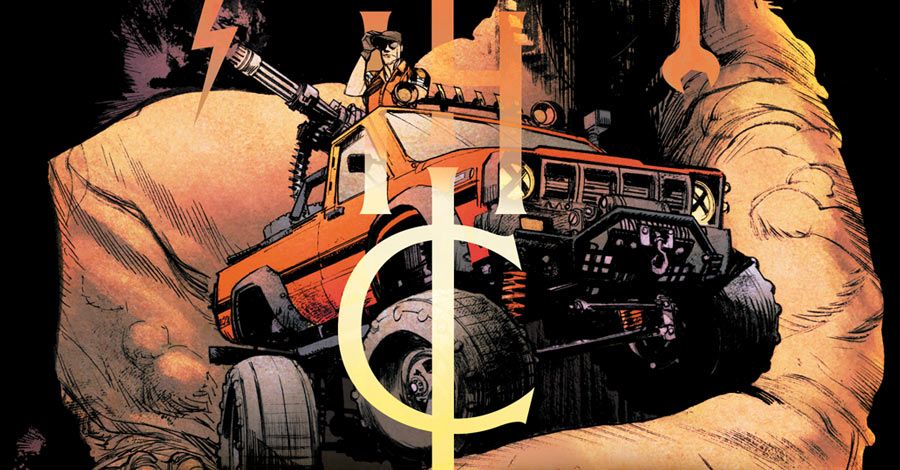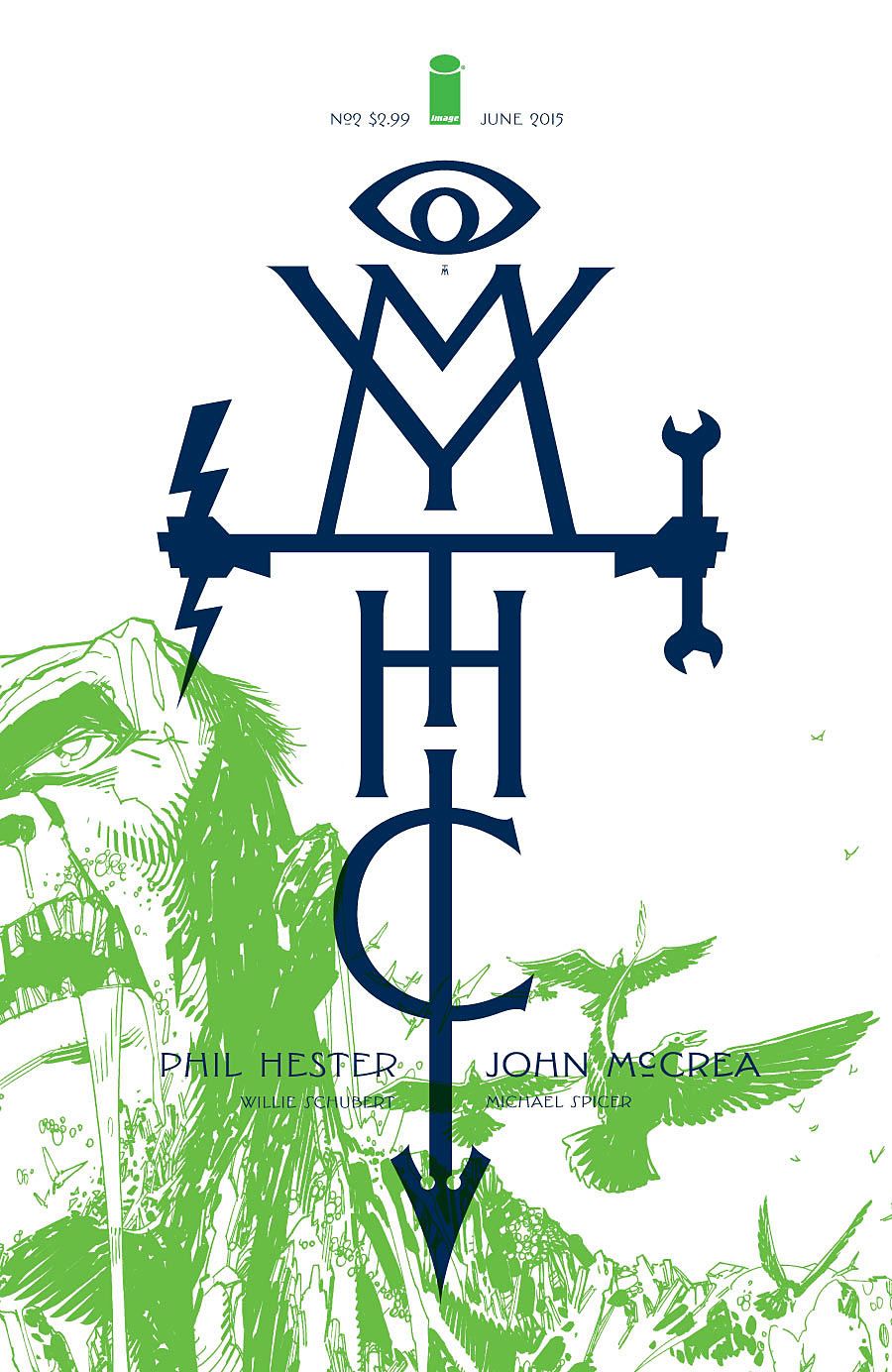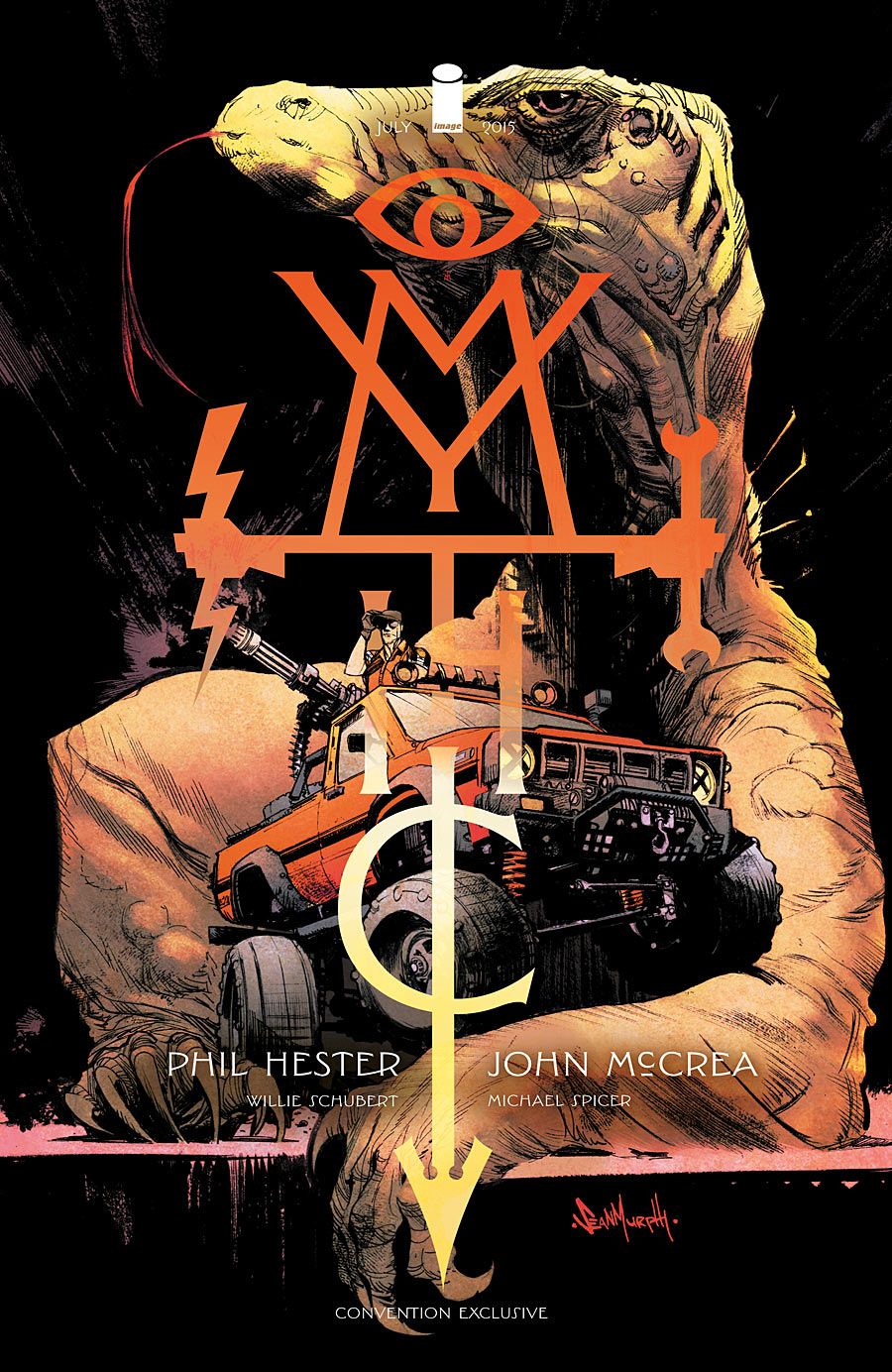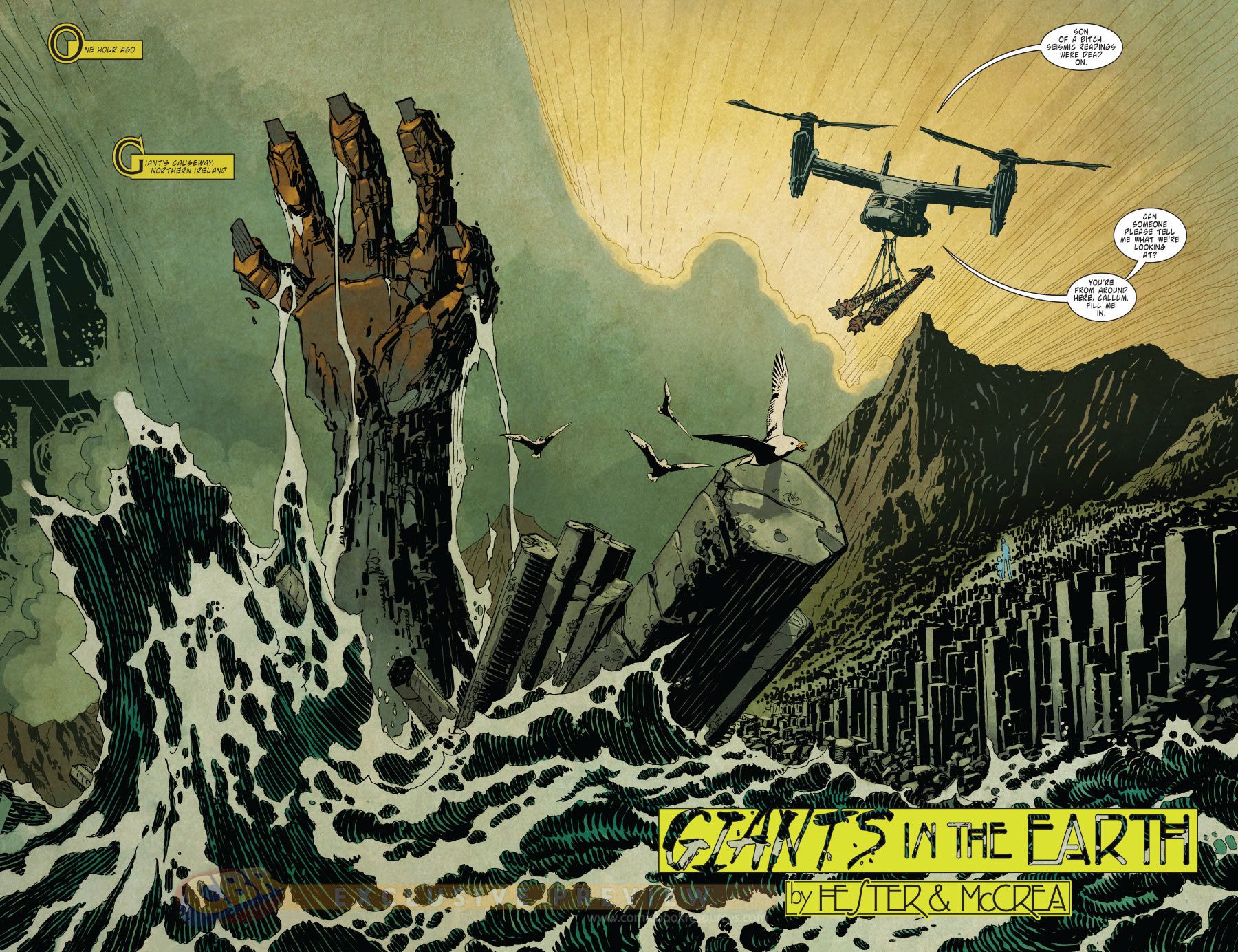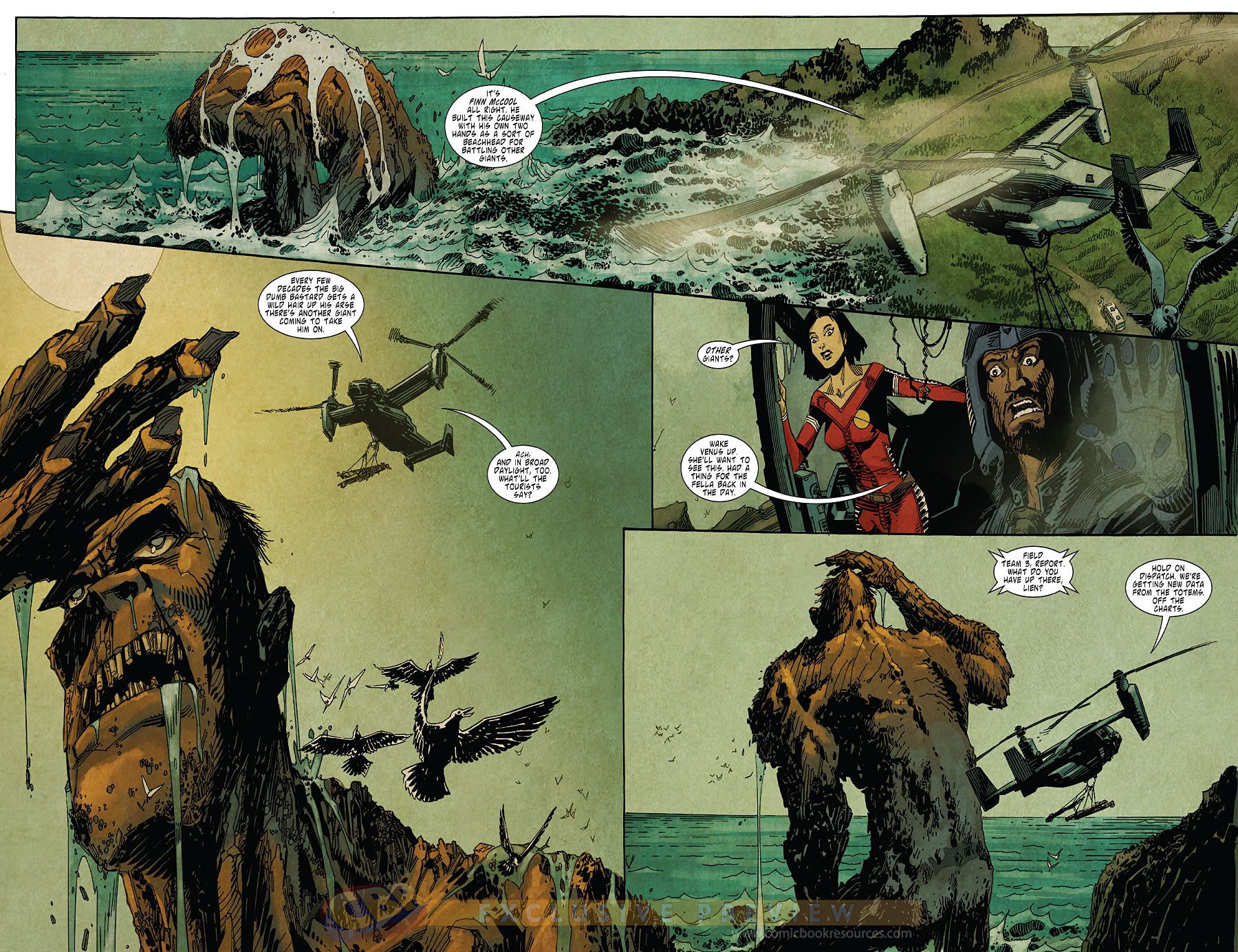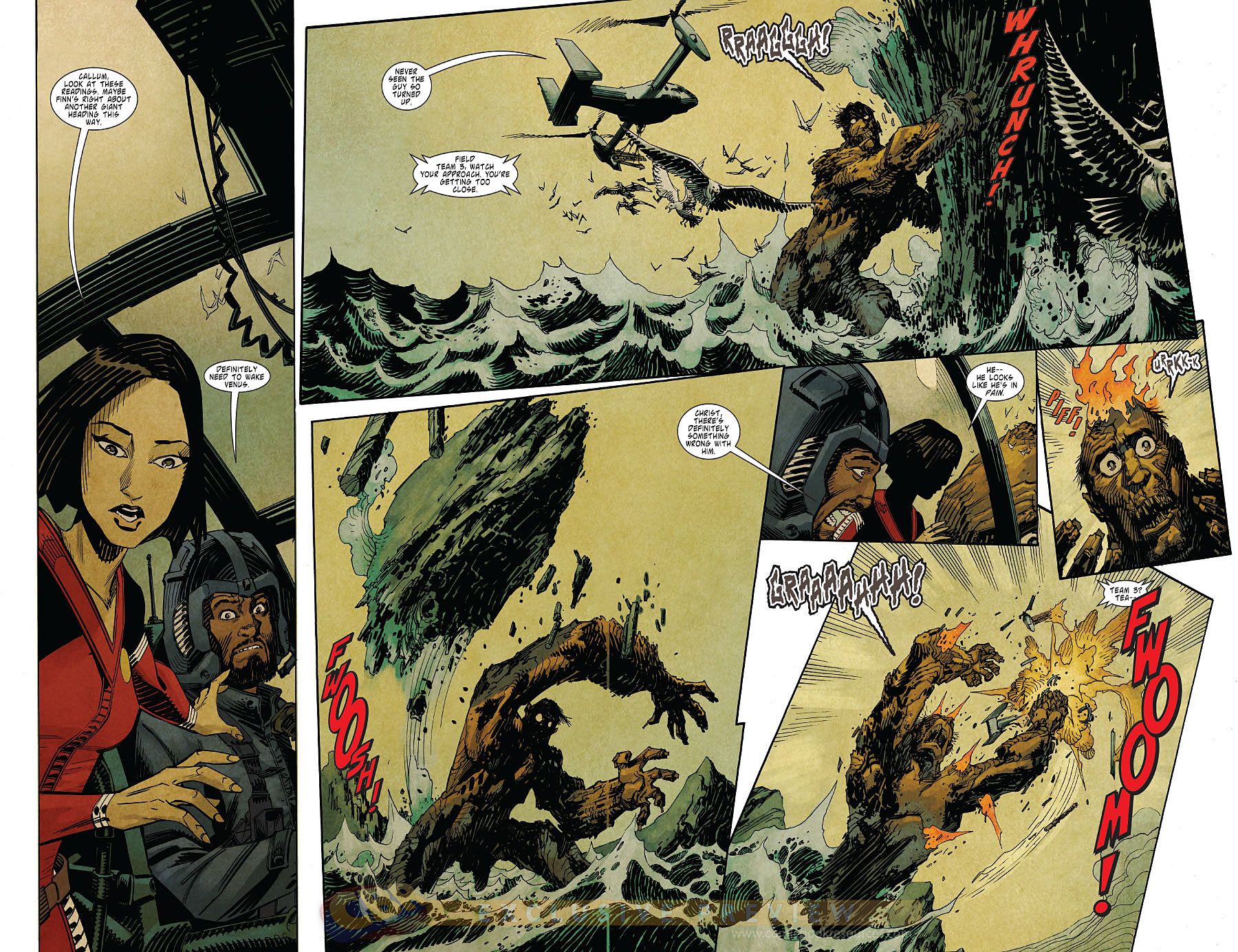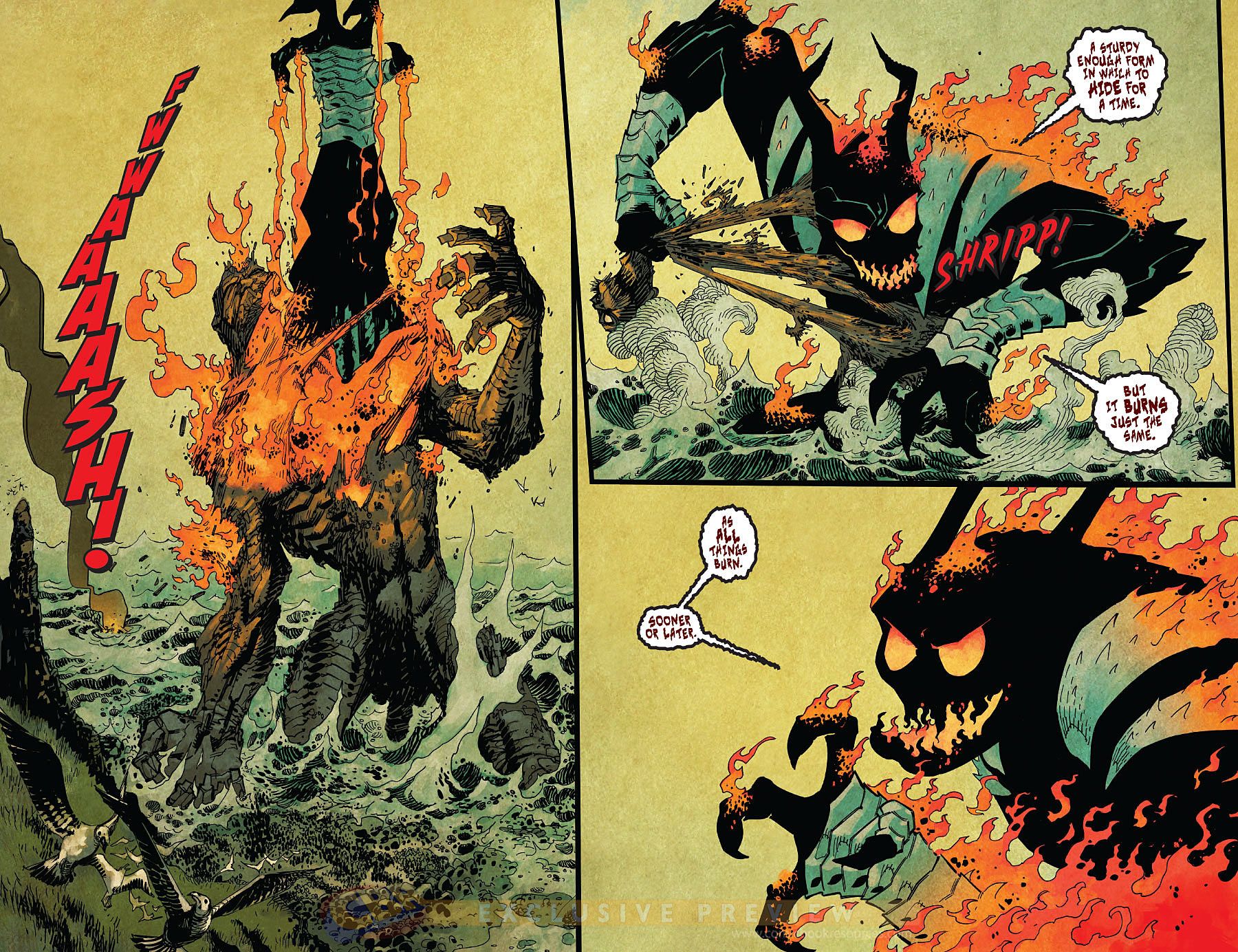When the world is secretly run magic, myth and supernatural forces under the guise of science, who can be trusted to fix things when they break? Queue up an unusual team comprised of an Apache shaman, a Greek goddess and a cell phone salesman, each uniquely suited to keep things running smoothly. Not only is the group tasked with cosmic maintenance, but they must continue to keep the true nature of the world from humanity. But what happens when the team is attacked by a force, set on bringing a new form of order and doing away with magic altogether? Find out in "Mythic," the dazzling new Image Comics series by Eisner-nominated writer Phil Hester and Eisner Award-winning artist John McCrea.
With Issue #1 already in stores and #2 out June 24, CBR News checked in with Hester to find out more about the wild landscape of legends weaving their way into the series and the challenge of humanizing folktales for mature readers.
CBR News: You have an awesome team on "Mythic" -- John McCrea on art, Michael Spicer on colors and Willie Schubert on letters. How did you guys come together? And what made each person a good fit for the series?
Phillip Hester: It's really all down to John [McCrea]. In fact, get used to this reply. John, John, John! "Mythic" is a concept I created for Four Star Studios digital delivery experiment Double Feature, but it was limited to a short story. I really wanted to expand on that world, so when John told me he'd been chatting with Image Publisher Eric Stephenson about doing a book over there, I showed the idea to John. He liked the concept, provided we could add more swears, and I obliged.
John likes to draw strange creatures and some of his previous assignments never really took advantage of his gift for making up monsters. "Mythic" gives him the chance to go nuts. From there it was down to people John was comfortable working with. Michael Spicer has a coloring style that's earthy and organic as well as being a bit otherworldly, which fits both John's work and the book's subject matter to a tee. Willie Schubert is an old master and seemingly capable of making even my jumbled balloon placements read correctly. Rian Hughes brought his considerable talents to bear designing the book, and I think his sensibilities make it stand out on the stands like a lighthouse. Rob Levin then tries to get us lined up in a row, which is the hardest gig of all.
John has such a huge playground of ideas and weirdness to experiment with -- have you written anything yet that he was nervous about drawing?
Nothing has tripped him up yet. I keep thinking I'll hit upon something, but he's outsmarted me every time. I'll find his weakness. You know, maybe that's how we should market the book -- keep us around until I find a way to cross up McCrea!
What was the original idea for "Mythic," and has it changed as you've worked with your co-creator?
You're looking at it. The whole idea that our world actually functions according to myths and superstitions and that science is a balm for our psyches seemed like a fun concept to play with. I like any book that can turn the truth on its side for a laugh. Mythic, a team of semi-divine characters, travels the world to make sure the gears of magic that turn the planet don't grind to a halt, and in the process make sure us humans never find out about it, or we'd go nuts. I mean, do you want to be there when Neil DeGrasse Tyson finds out Helios pulls the sun across the sky with his chariot? It's a fun contrast to make magic, which is kind of a nebulous, romantic notion, and make it an almost mundane system that has to be maintained by a jaded team of no-nonsense pros. Magic janitors.
I was always a big reader of myth and legends as a kid, so getting the opportunity to play with that subject matter is a draw for me. In my comics writing career I've done a lot of research on historical subjects and I've noted sometimes the deeper you get into the facts of any past event, the more unclear the actual subject becomes. I mean, there's always an expert just behind the next one ready to say, "um, actually." I mean, look into something like Viking history and it's "um, actuallys" all the way down. And I thought, if there's that much in dispute about actual events, how much do we have wrong about the myths and legends of the past? "Mythic" sort of takes advantage of that dynamic to fill in the gaps or even completely subvert mythic lore as we know it. Along the way we can humanize some of the subjects of these fables for both humor and pathos. I hope.
As far as what's changed, that comes in the working process itself. For John's sake, we work Marvel style, which means I write a general outlines of a scene along with complete dialogue -- almost like a radio play. When I get John's art back I make sure the dialogue beats line up and adjust to any new ideas he's thrown in while drawing, and he usually uncovers a gem or twenty every issue. It's an exciting way to work. Every time I get a page back it's both a reward and a challenge.
What have been the most rewarding and challenging parts?
John will sometimes put the focus of a page or panel on a different aspect of the story than I assumed he would when I wrote it, so it forces me to look at my story from a new perspective, which can only be good. It's easy to say the rewarding pages are the ones where John cuts loose and draws a killer monster or something, but in issue #3 he draws an interaction between Waterson and his grandchild that just takes the cake for old softies like me.
I love the blend of horror/fantasy/magic, and it feels like a world with so many possibilities. What are some of your favorite legends and how do you decide what makes it into the series and what doesn't?
That's the best part of the book to my mind. I can skip around and play with whatever has my or John's interest at the moment. I mean, I didn't plan on using Finn McCool in issue #2, but John loves drawing this Irish legend, so in he goes. Also, because of that uncertainty I spoke about earlier, we can always make up whatever we want and say the generally accepted lore is just flat out wrong. There's a character in the book who has a past that is no less majestic than, say, Hercules, but no one has ever heard of him. We get to fill in those blanks and just say, "Hey, it was lost to time."
In "Mythic," science is a cover up to conceal the true nature of reality, which is based in magic. What, if any, scientific elements are real in this world? And what part does religion play in the overall order of things?
Science seems right on the surface. It's observably correct. It's the how, but not the why. But just beneath the surface of this observable universe is a roiling sea of insanity and it pokes its finger up through the thin cloth of science whenever it wants.
As for magic and religion, well, it's all real, all the time. That's why Mythic is on the job. If a myth crashes headlong into a legend, it's Mythic's job to sort it out, almost like traffic cops. In the end, the real trouble is the human imagination and how we warp reality itself. Reality hates this. It wants order. Mythic cheerfully keeps the chaos alive. There's a terrible sterility to conformity of thought, even when the consensus is right. Mythic is out there standing up for the irrational, the absurd, the open fire hydrant of insanity on the street corner the kids are running through. We come into this story just as reality -- or order -- finds a way to finally strike back.
In the first issue, we meet Nate, a regular guy who suddenly finds himself in an extraordinary situation. What were some important qualities for you in developing the main character for this series? What kind of a guy is Nate?
Nate is us, right? This guy bored by modern life and completely ready to chuck every last stitch of it for something adventurous, even if it's completely nonsensical. I hope the reader shares that same sense of tossing what they expect out of a comic book and just rolling with our chaotic ball of horror, humor and humanism.
What is your strategy for marketing and promoting a creator-owned title? It's such an impressive undertaking to launch, and with all of your experience I'm so curious to know what the business side of things looks like, if you don't mind sharing.
I am absolutely terrible at this. I was born without the hype gene, and John isn't too keen on it himself. I guess if we can center the promotion around content, and access to the content, we're happy. I think that's why Eric's suggestion that we make the first issue less than two dollars rang true to us. It lets readers and retailers take a chance on the content. Also, the guest covers [by Matteo Scalera on issue #1 and Declan Shalvey and Sean Murphy on #2] give artists we admire a chance to explore the universe we created, which is rewarding for both our team and the readers. Again, all content based. Hopefully the quality of the book is all we'll need to rise above the static. I guess that's all we know how to do: do a good job and hope it catches the reader's eye.
"Mythic" #2 is on sale June 24 from Image Comics.

